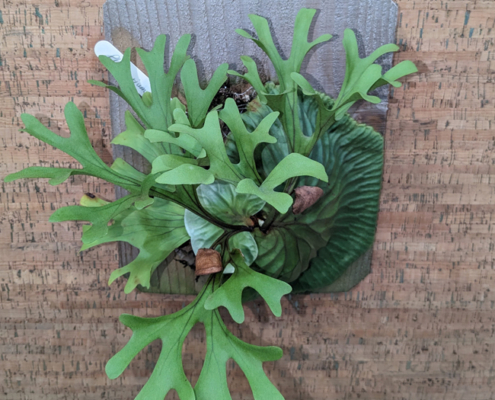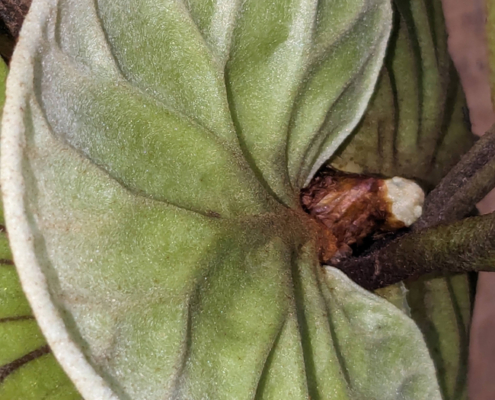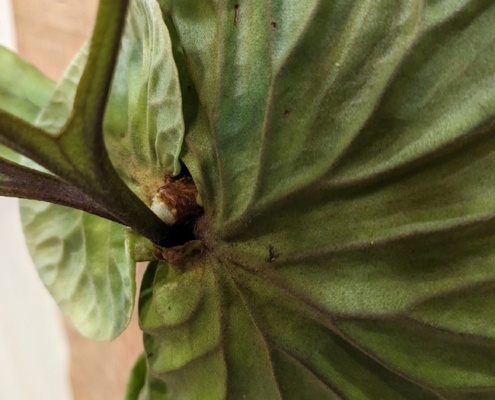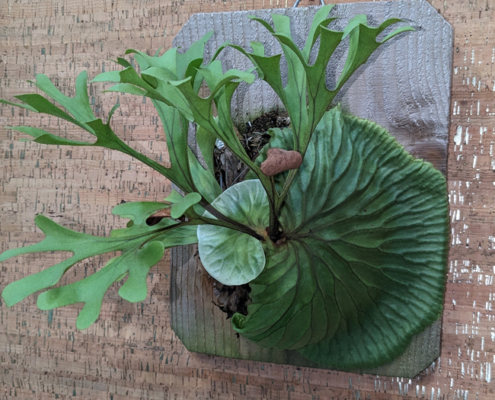Polypodiaceae
Plant Profile
Platycerium ridleyi
(plat-ih-SEER-ee-um ) (rid-lee-eye)
Subfamily Platycerioideae
Genus Platycerium
“With an interesting appearance, Platycerium ridleyi is found in tropical rain forests growing very high up in trees. Thus for successful growing, provide high humidity with adequate air movement and bright light.
Shield fronds have ridges formed by the veins that, like P. madagascariense, create spaces behind the shields which in nature are inhabited by ants. As a result, a humid environment is necessary to compensate for the plant not retaining water behind the fronds.
Fertile fronds are upright and look like the antlers on a deer, probably the reason that Platyceriums are called staghorn ferns. The fronds are also unique as the spore patch is on a separate lobe on each fertile frond. Only P. coronarium shares this character. The spores drop from these lobes in clumps when ripe
Platycerium ridleyi is not considered a large staghorn and is one that requires extra attention to its growing environment and protection from insects. It is not cold tolerant and young plants will quickly develop rot if overwatered and cold. It is also a favorite of many insects and especially of snails and slugs which can kill a plant overnight.” – Platyceriums: Growing the Staghorn Ferns
“We have found that Platycerium ridleyi prefers to remain wet through the summer months in South Florida.” – Hideaway Palmetum
“The native range of this species is Peninsula Thailand to W. Malesia. It is an epiphyte and grows primarily in the wet tropical biome.” – Kew
Borneo, Malaya, Sumatera, Thailand
Origin Map from Kew Royal Botanic Gardens














